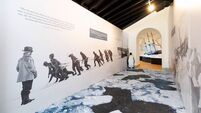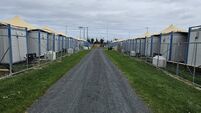Open day at historic Kildare site
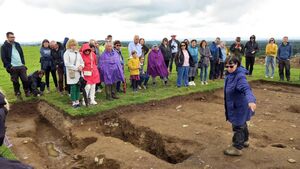
Dr Susan Johnston detailing some of what was found this year
DÚN Ailinne outside Kilcullen was once a place of occasion.
A hill associated with the Kings of Leinster, perhaps where they came to collect tribute. Reminding their subjects that payment was due in return for their protection. Or where pagan priests solidified their sacred sway, perhaps eventually and warily watching the advance of monastic Christianity on the lower nearby hill of Old Kilcullen.
Of Ireland’s ancient ‘royal’ sites, Dún Ailinne is the one about which least is known, except that there was activity there from the Iron Age, likely in the form of annual gatherings.

There are mentions of these in documents written much later, from about 800AD onwards, but there is still a big information gap.
Since 2016, Dún Ailinne has again been a place of annual pilgrimage, by successive groups of archaeology students from the United States. Participants in investigations of the site, conducting fieldwork ‘digs’ courtesy of the Thompson family landowners and under the supervision of archaeologist-anthropologist Dr Susan Johnston of George Washington University and her colleague Dr Suzanne Garrett.
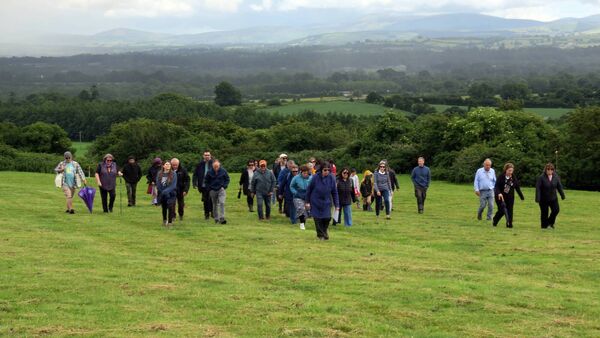
The most recent such ‘pilgrimage’ has just ended with what has become a now traditional Open Day at the site where people from all over the county interested in such things get a chance to see and hear about the latest developing knowledge of Dun Ailinne and it's still in many ways mysterious history.
With close to a hundred visitors on this year’s Open Day, despite the localised thundershowers which could be seen from the hilltop dumping rain elsewhere around the area, it was yet another successful occasion for all concerned. Not least for the Jack and Jill Foundation charity nominated this year by the Thompson family to benefit from the €5 a head visitor donation.
Dr Johnston led two tours of the site during the afternoon, explaining the context of the latest round of investigations against the background of the original excavations by the late Professor Bernard Wailes begun in the late 1960s.
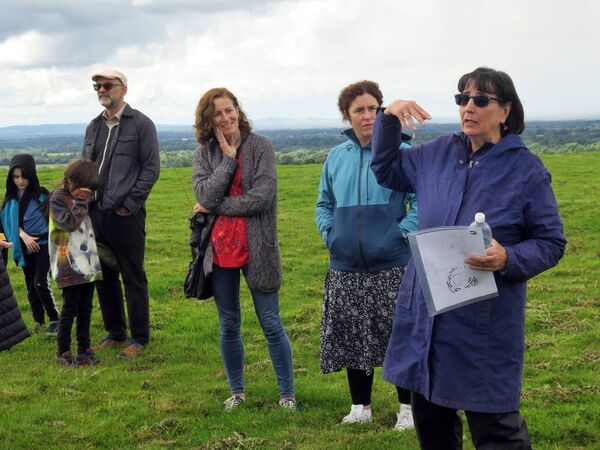
Dr Johnson commenced her current explorations of the site in 2006.
Professor Pam Crabtree of New York University, who worked on the original excavations undertaken by Bernard Wailes, has also been a key co-participant in the current Dún Ailinne investigations.
The 2024 student cohort included five from Dr Johnston’s university, one each from the University of Gettysburg and New York University, and this year including an Irish student.
Those who came on-site for the open day heard that the work this year has continued to yield more knowledge on the complex set of structure which have been gradually revealed over the years. "We're continuing to do the same thing, and this year we're getting closer to closing the gap," Dr Johnston said, referencing the remains of three different enclosures of which there are still remains under the soil on the hill and which they have been specifically investigating since 2018. She believes they weren't covered structures but were possibly enclosures where some kind of religious rituals were performed.
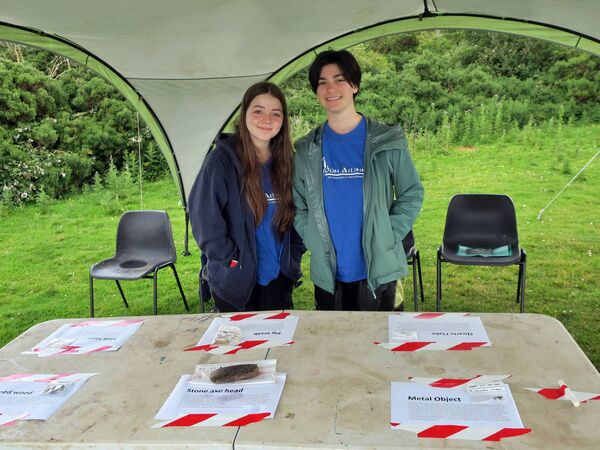
The investigations also suggest that the structures were taken down and rebuilt at different times, and at some stage the site went out of use.
Dr Johnston noted that while there are similarities in the form of the structures on Dún Ailinne with those found on other Irish ‘royal’ sites, these seem to be unique to Ireland, with no equivalents either in Britain or in continental Europe.
She said the excavations have shown evidence of circular structures built outside each other at successive times. Radio-carbon dating which is currently being prepared for publication suggests this period of activity at Dún Ailinne could span 300 years.
"It's difficult to be precise, but something in the region of the last two centuries BC and the first century AD, something like that."
Dún Ailinne is the largest pre-Norman earthen enclosure in Ireland, covering some 44 acres. The ditch or 'henge' which circumscribes it is the best preserved and largest such feature in the country.
Dr Johnston said there are still things to be found out about the site which could require the summer investigations to continue for years to come.
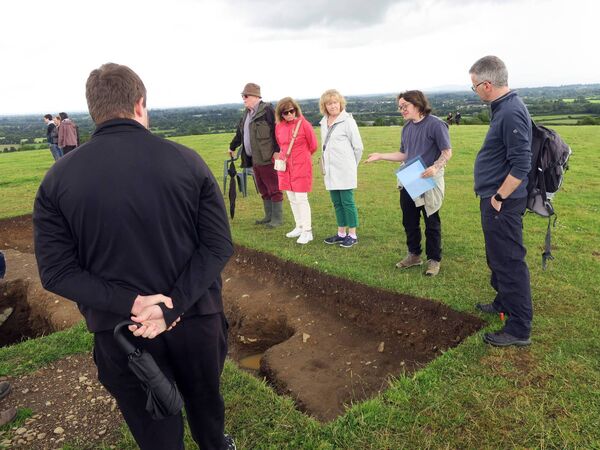
Dún Ailinne has been put on the tentative list for UNESCO World Heritage classification, as part of the Royal Sites of Ireland application.
The Dún Ailinne site is on private land and is a working farm, not open to the public. Permission for any visit must be obtained from the Thompson family, who have kindly facilitated the archaeological investigations to date.
